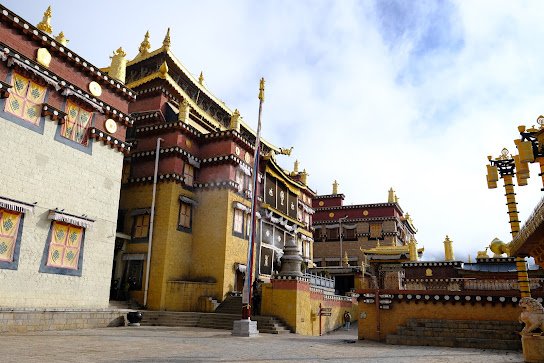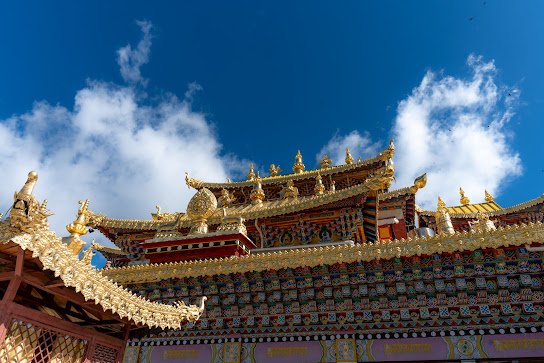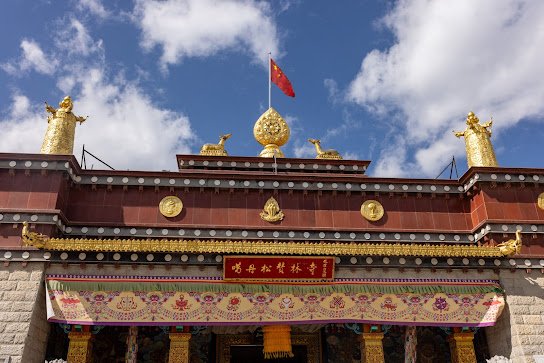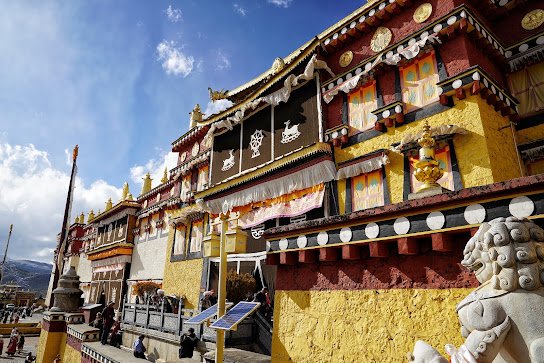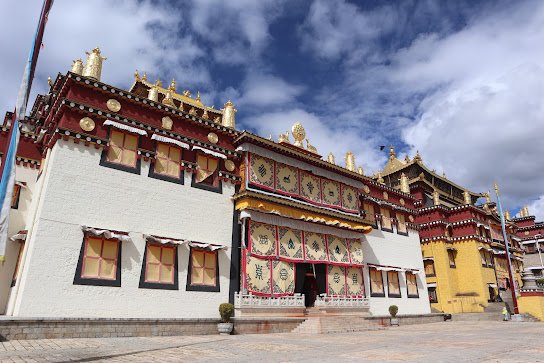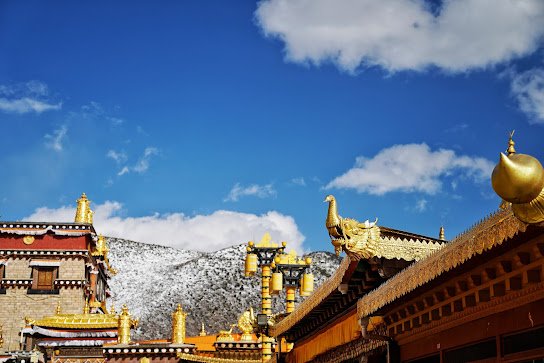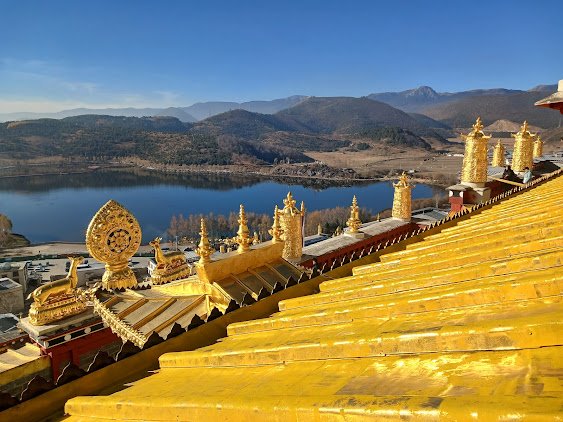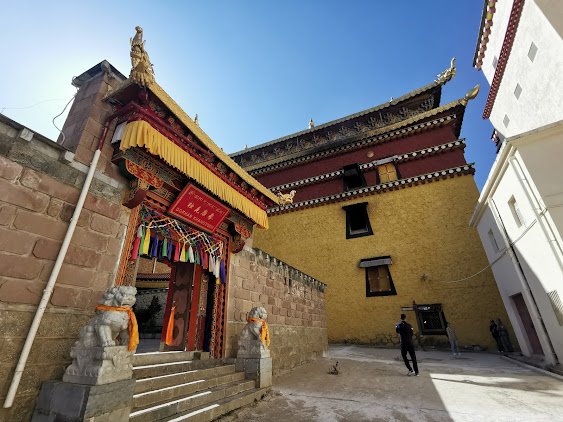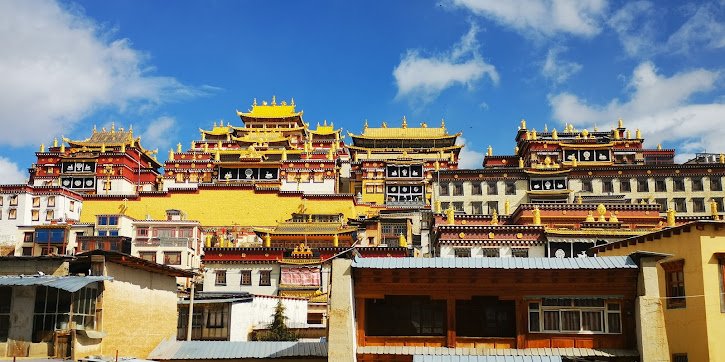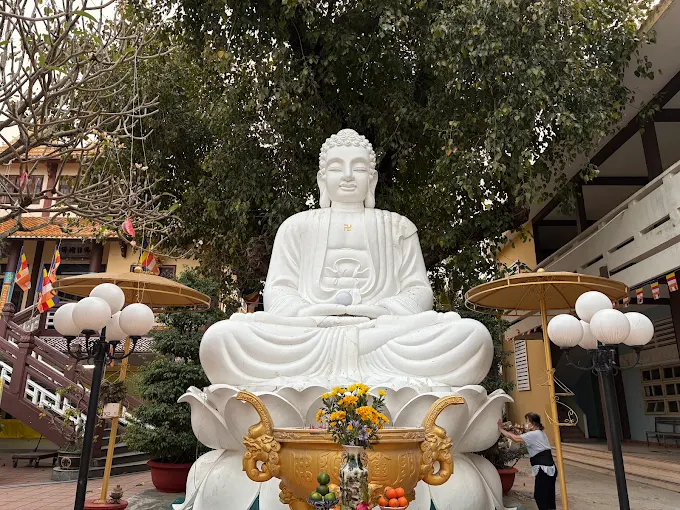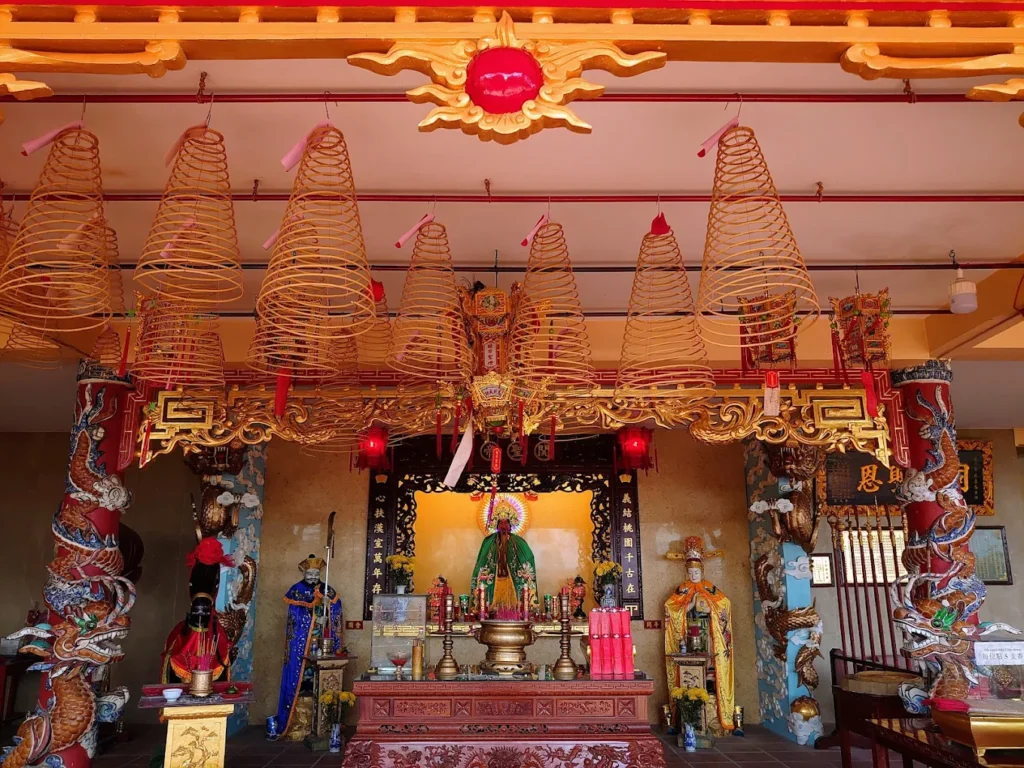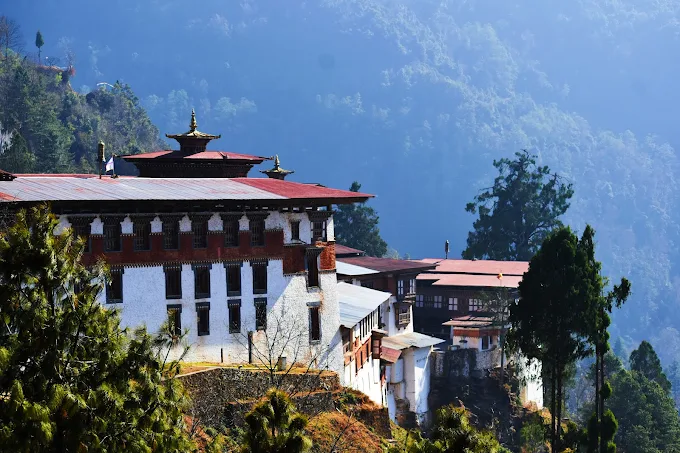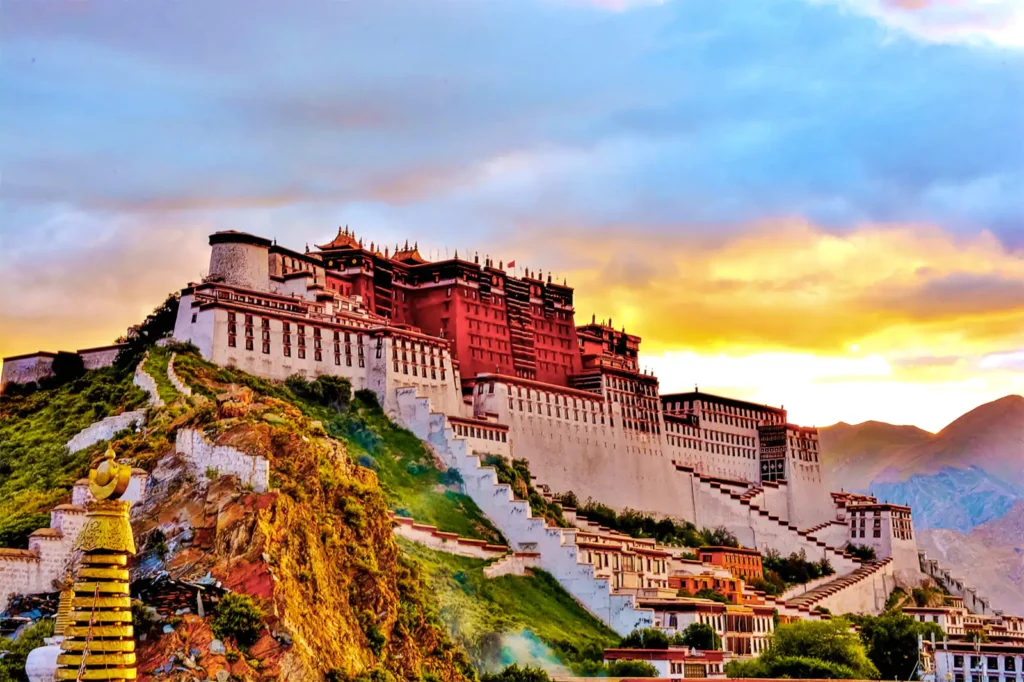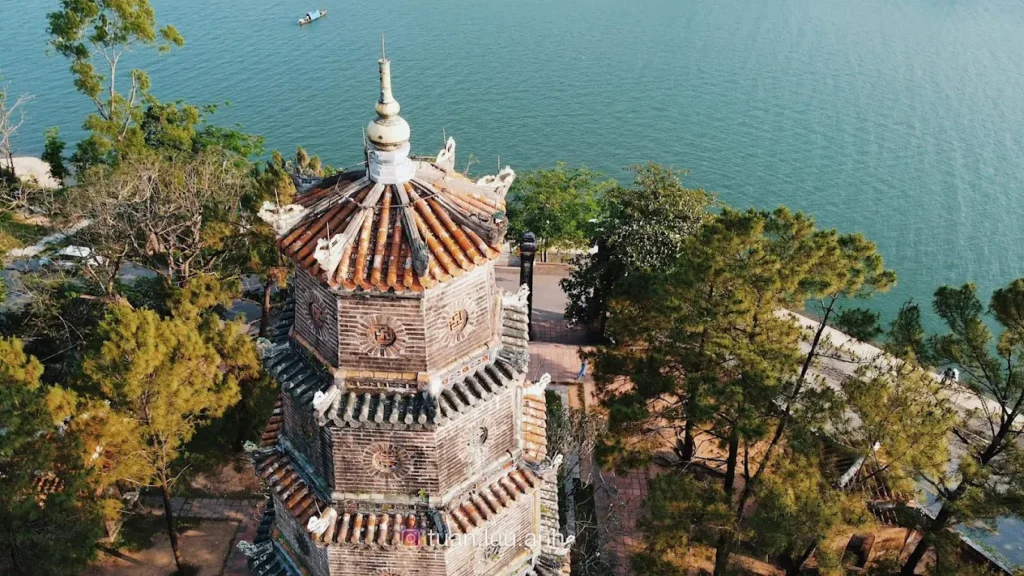Songzanlin Monastery: The Little Potala of Shangri-la’s Gelugpa Legacy
Songzanlin Monastery, perched beneath the majestic Foping Mountain just 5 km from Shangri-la’s heart in Yunnan, China, shines as the largest Tibetan Buddhist monastery in the province, its golden roofs evoking Lhasa’s Potala Palace. Founded in 1679 by the Fifth Dalai Lama’s disciple, this sacred Gelugpa sanctuary, known as Ganden Sumtseling or 噶丹松赞林寺, houses over 700 monks and treasures like gilded Sakyamuni statues and ancient Thangkas. At 3,300 meters, its whitewashed walls and intricate murals glow against the Himalayan backdrop, captivating pilgrims and travelers with its spiritual grandeur. This immersive listing unveils Songzanlin’s essence, guiding you through its storied past, architectural splendor, sacred rituals, and practical visitor insights, offering a journey into a cornerstone of Tibetan Buddhism.
The Spiritual Heart of Songzanlin
Essence of Songzanlin Monastery
Songzanlin Monastery pulses with the vibrant spirituality of the Gelugpa sect, embodying Tibetan Buddhism’s devotion to wisdom and compassion in Yunnan’s high plateau. Established in 1679, it stands as a cultural and religious beacon, often dubbed the “Little Potala” for its architectural resemblance to Lhasa’s iconic palace. Its defining treasure—a towering 8-meter gilded Sakyamuni statue—radiates blessings, drawing devotees to its sacred halls. Nestled near the serene Lamuyangcuo Lake, Songzanlin’s tranquil majesty invites contemplation of Tibet’s enduring faith.
- Spiritual Core: Largest Gelugpa monastery in Yunnan.
- Iconic Feature: 8-meter gilded Sakyamuni statue.
- Cultural Role: Center of Tibetan Buddhist heritage.
Historical Evolution
Songzanlin’s story began when the Fifth Dalai Lama, through divination, selected its site in 1679, entrusting its construction to his disciple, Zhasa Khutuktu. Completed in 1681, it flourished as a Gelugpa stronghold, housing up to 2,000 monks by the 19th century. The Cultural Revolution (1966–1976) damaged its halls, but restoration since the 1980s, funded by state grants and devotees, revived its grandeur, including the regilding of its roofs. A 2006 renovation added modern facilities while preserving its 17th-century charm.
- Founding: Built in 1679, completed 1681.
- Cultural Revolution: Damaged, restored since 1980s.
- Restoration: Modern upgrades in 2006.
Cultural Impact
Songzanlin’s role as Yunnan’s premier Gelugpa monastery has shaped Tibetan Buddhist culture, fostering interethnic harmony among Tibetans, Han, and local minorities. Its Thangkas, palm-leaf scriptures, and murals, preserved via HimalayanArt.org, are studied globally, reflecting 17th-century artistry. Annual festivals like Losar and Saka Dawa draw thousands, blending devotion with cultural vibrancy. Internationally, Songzanlin attracts scholars and tourists, resonating as a symbol of Tibetan resilience.
- Gelugpa Influence: Shapes regional Buddhist practices.
- Artistic Legacy: Thangkas, murals studied globally.
- Global Appeal: Draws scholars, cultural tourists.
Signature Legacy
The 8-meter gilded Sakyamuni statue, enshrined in the Zhacang Hall, is Songzanlin’s crowning jewel, its radiant presence believed to embody divine wisdom since the 17th century. The Jikang Hall’s intricate murals, depicting Tsongkhapa’s life, narrate Gelugpa history, while a sacred chorten in the courtyard, blessed by the Fifth Dalai Lama, holds protective relics. A legend recounts how the Lamuyangcuo Lake’s goddess, Bandanlamu, guided the monastery’s founding, affirming its sanctity. These treasures define Songzanlin’s spiritual and historical allure.
- Sakyamuni Statue: 8-meter gilded icon.
- Jikang Murals: Tsongkhapa’s life narrative.
- Chorten Legend: Blessed by Fifth Dalai Lama.
Community and Global Reach
Shangri-la locals revere Songzanlin, offering butter lamps during festivals and life events, viewing it as a protective sanctuary. Its 700 monks maintain rituals, study texts, and guide visitors, fostering spiritual continuity. The Tibetan diaspora connects through Gelugpa networks, while international tourists, explore its halls. Social media posts on X and academic studies amplify its influence, linking Songzanlin to global Buddhist communities.
- Local Devotion: Butter lamp offerings by Shangri-la residents.
- Monastic Community: 700 monks uphold rituals.
- Global Appeal: Attracts diaspora, tourists, scholars.
Architectural Splendor of Songzanlin
Distinctive Design
Songzanlin’s architecture, sprawling across 33.6 hectares at 3,300 meters, blends Tibetan and Han Chinese styles, its whitewashed walls and golden roofs mirroring Lhasa’s Potala Palace. Centered on the Zhacang and Jikang Halls, accessed via 146 stone steps, it features eight sub-monasteries, prayer halls, and monk quarters, reflecting a mandala layout. The Lamuyangcuo Lake enhances its serene setting, creating a majestic aesthetic unique to Songzanlin’s Gelugpa identity.
- Style: Tibetan-Han architectural fusion.
- Layout: Zhacang, Jikang Halls, eight sub-monasteries.
- Setting: Golden roofs by Lamuyangcuo Lake.
Signature Structures
The Zhacang Hall, a three-story marvel, enshrines the 8-meter Sakyamuni statue, flanked by Tsongkhapa and Maitreya, glowing under butter lamps. The Jikang Hall, adorned with murals of Tsongkhapa’s life, hosts grand ceremonies, its gilded roof reflecting sunlight. The Dratsang sub-monasteries, housing monk colleges, feature smaller chapels with Thangkas and chortens. The courtyard’s central chorten, blessed by the Fifth Dalai Lama, anchors the kora path, inviting devotion.
- Zhacang Hall: 8-meter Sakyamuni statue.
- Jikang Hall: Tsongkhapa murals, gilded roof.
- Dratsang Chapels: Thangkas, chortens.
Artisanal Mastery
Songzanlin’s Thangkas, crafted with mineral pigments, depict Gelugpa deities like Sakyamuni and Tara, their vibrant hues preserved post-1980s restoration. The Sakyamuni statue, gilded in the 17th century, showcases Tibetan sculptural finesse, while palm-leaf scriptures, etched with gold ink, reflect ancient calligraphy. Carved wooden beams, featuring lotus motifs, adorn the halls, and bronze butter lamps illuminate chapels. These works, safeguarded through restoration, highlight Songzanlin’s artistic legacy.
- Thangkas: Gelugpa deities, vibrant pigments.
- Sakyamuni Statue: 17th-century gilded relic.
- Palm-Leaf Scriptures: Gold-etched calligraphy.
Hidden Architectural Gems
Songzanlin conceals subtle treasures within its vast grounds. The Jikang Hall’s rooftop terrace offers panoramic views of Lamuyangcuo Lake, framed by prayer flags. A faded mural in a Dratsang chapel depicts the Fifth Dalai Lama’s divination, a historical glimpse. The courtyard’s mani stone pile, etched with Om Mani Padme Hum, invites quiet reflection, while a small shrine near the chorten holds a relic of Tsongkhapa, believed to bless pilgrims.
- Rooftop Terrace: Lamuyangcuo Lake views.
- Divination Mural: Fifth Dalai Lama artwork.
- Tsongkhapa Relic Shrine: Blessed chorten shrine.
Preservation and Evolution
Preserving Songzanlin’s structures is challenging in Shangri-la’s high-altitude climate. Restoration since the 1980s, funded by state grants and devotees, used traditional pigments for Thangkas and reinforced stone walls. The 2006 renovation regilded the roofs and added visitor facilities, blending modern durability with 17th-century aesthetics. Ongoing efforts, supported by cultural preservation funds, ensure Songzanlin’s legacy endures, despite erosion and seismic risks.
- Restoration: Pigments, wall reinforcements since 1980s.
- Roof Regilding: Modern upgrade in 2006.
- Funding: State, devotees.
Sacred Rites and Gelugpa Devotion
Sacred Daily Rites
Each dawn, Songzanlin awakens with resonant chants, as monks gather in the Zhacang Hall, their voices harmonizing with butter lamp glow. Pilgrims offer khatas (silk scarves) at the Sakyamuni statue, their prayers mingling with juniper incense. The hum of prayer wheels along the kora path creates a meditative rhythm, enveloping visitors in Songzanlin’s spiritual calm.
- Chanting: Morning sutras in Zhacang Hall.
- Offerings: Khatas at Sakyamuni statue.
- Ambiance: Incense, prayer wheel hum.
Unique Spiritual Practices
Songzanlin’s monks perform Gelugpa rituals, including Tsongkhapa-focused recitations and Tara prayers, reflecting the sect’s emphasis on wisdom and compassion. Pilgrims walk the kora, spinning prayer wheels to accrue merit, a practice tied to the monastery’s mandala design. The Jikang Hall hosts Maitreya blessing ceremonies, unique to Songzanlin’s Gelugpa tradition, believed to inspire future enlightenment. These rituals, rooted in the Fifth Dalai Lama’s teachings, deepen the monastery’s spiritual allure.
- Tsongkhapa Rites: Gelugpa wisdom recitations.
- Kora: Prayer wheel circumambulation.
- Maitreya Blessings: Future enlightenment ceremonies.
Vibrant Festival Traditions
Songzanlin’s festivals transform the monastery into a vibrant devotional hub. Losar (Tibetan New Year) features kora walks, lamp offerings, and Cham dances depicting Buddhist triumphs, drawing thousands. Saka Dawa, marking Buddha’s enlightenment, includes mass prayers and communal feasts of tsampa (roasted barley) and butter tea. The Butter Lamp Festival, held in winter, illuminates the halls with thousands of lamps, uniting locals and pilgrims in devotion.
- Losar: Kora, Cham dances, lamp offerings.
- Saka Dawa: Mass prayers, communal feasts.
- Butter Lamp Festival: Illuminated winter devotion.
Visitor Engagement
Visitors can offer khatas or light butter lamps at the Sakyamuni statue, guided by monks, immersing in Songzanlin’s spiritual life. Photography is permitted for a fee (included in entry ticket), capturing Thangkas and murals, but flash is prohibited, and close-up shots of statues may be restricted. Joining the kora lets travelers walk with pilgrims, feeling Songzanlin’s sacred rhythm. Monks may share tales of the Fifth Dalai Lama’s divination, enriching the visit with historical lore.
- Offerings: Khatas, lamps with monk guidance.
- Photography: Included in ticket, no flash, restricted statue shots.
- Kora Participation: Walk with pilgrims.
Monastic and Community Roles
Songzanlin’s 700 monks, primarily Gelugpa, maintain daily rites, study texts, and guide visitors, upholding its spiritual legacy. They offer blessings for local harvests, weddings, and life events, strengthening Shangri-la ties. The monastery trains young monks in Thangka painting and ritual dance, preserving Gelugpa artistry. This bond ensures Songzanlin remains a living cultural and spiritual center, fostering devotion across the region.
- Monastic Duties: Rites, study, visitor guidance.
- Community Ties: Blessings for local events.
- Art Preservation: Thangka, dance training.
Visiting Songzanlin Monastery
Navigating to Songzanlin Monastery
Songzanlin lies 5 km north of Shangri-la’s Dukezong Ancient Town, under Foping Mountain, Jiantang Town, Diqing Tibetan Autonomous Prefecture. From Lhasa, a 1,200-km flight or 24-hour drive reaches Shangri-la’s Diqing Airport or city center. From Shangri-la’s center, a 15-minute taxi (~20 RMB) or bus (No. 3, 2 RMB) reaches the monastery, marked by its golden roofs. The nearby Lamuyangcuo Lake serves as a guiding landmark.
- From Lhasa: 1,200 km, 1-hour flight or 24-hour drive to Shangri-la.
- From Shangri-la Center: 15-minute taxi or bus, 5 km north.
- Local Access: Taxi or Bus No. 3 from Dukezong.
Address of Songzanlin Monastery
- Location: Jiantang Town, Shangri-la City, Diqing Tibetan Autonomous Prefecture, Yunnan, China.
- Coordinates: 27.8667° N, 99.7000° E.
- Context: 5 km north of Dukezong, near Lamuyangcuo Lake.
Visiting Hours and Etiquette
Songzanlin is open daily from 8:00 AM to 6:00 PM, with early visits recommended for fewer crowds and cooler temperatures. Dress modestly, covering shoulders and knees, and remove hats in halls to show respect. Photography is included in the 75 RMB entry fee (plus 15 RMB shuttle); bring a flashlight for dim interiors, avoid flash, and note that close-up statue shots may be restricted. Respect pilgrims by maintaining silence, walking clockwise, and not touching relics or murals.
- Hours: 8:00 AM–6:00 PM, best in morning.
- Dress Code: Modest clothing, no hats in halls.
- Etiquette: Photography included in fee, no flash, clockwise movement.
Accessibility and Safety
Songzanlin’s grounds are accessible via paved paths and a shuttle from the entrance, but the 146 steps to the main halls pose challenges for those with mobility issues. Wheelchair users require assistance due to stairs; arrange with tour operators in Shangri-la. The 3,300-meter altitude requires acclimatization; hydrate and rest to avoid sickness. The site is safe, but watch for crowds during festivals and carry cash, as ATMs are scarce.
- Accessibility: Paved paths, 146 steps, shuttle available.
- Mobility Aids: Limited, arrange assistance.
- Safety: Acclimatize, watch for festival crowds, carry cash.
Amenities and Surroundings
Songzanlin offers restrooms and a small shop selling khatas and souvenirs near the entrance. Dukezong Ancient Town, 5 km away, serves momos (dumplings), butter tea, and yak-meat noodles, immersing visitors in Tibetan flavors. The monastery’s courtyard and Lamuyangcuo Lake provide serene reflection spots. Shangri-la’s old town, with shops and teahouses, and nearby Foping Mountain offer scenic exploration, enriching the visit.
- Amenities: Restrooms, small shop at entrance.
- Food: Dukezong markets with momos, tea.
- Surroundings: Courtyard, Lamuyangcuo Lake, Foping Mountain.
Immersive Visitor Tips
Arrive at 8:00 AM to hear monks chanting in the Zhacang Hall, their voices resonating with butter lamp glow, setting a meditative tone. Photograph the Jikang Hall’s murals from the upper balcony at midday, capturing their vibrancy with a flashlight, respecting the no-flash rule. Walk the kora at dusk, when Lamuyangcuo Lake glows golden, enhancing Songzanlin’s spiritual ambiance. Savor butter tea in Dukezong’s markets, chatting with locals about the Fifth Dalai Lama’s legend for cultural insights.
- Dawn Visits: Hear chants in Zhacang Hall, 8:00 AM.
- Photography: Jikang mural shots, no flash, upper balcony.
- Evening Kora: Lamuyangcuo Lake views at dusk.
